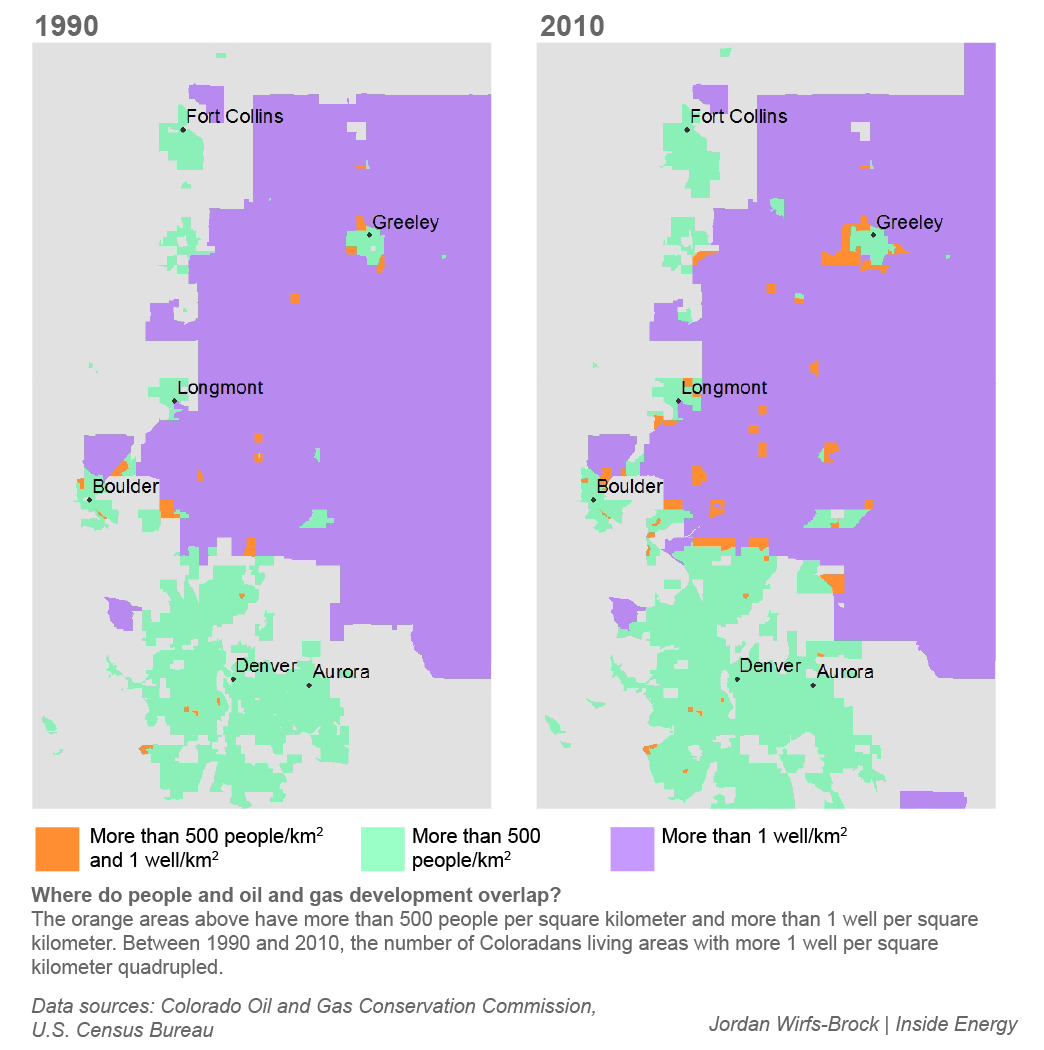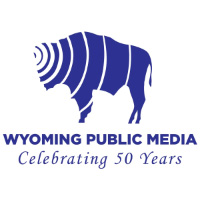In the past decade, horizontal drilling and hydraulic fracturing brought a frenzy of new oil and gas development to Colorado. Along with it has come intense debates about how close new drilling should get to people’s homes. But the story of this connection between people and oil and gas drilling goes back much further: Coloradans aren’t just living among new wells, they are also living among – and sometimes on top of – wells drilled and abandoned decades ago.
As Inside Energy’s Stephanie Joyce reports, once abandoned wells have been plugged with cement and the land around them has been reclaimed, we often forget about them. But those forgotten wells can continue to leak methane, a potent greenhouse gas that is also potentially hazardous if it accumulates in enclosed spaces, like buildings.
These maps explore the intersection of Colorado residents and oil and gas wells:
Map 1: Greeley’s Population Expands Into Historical Oil And Gas Fields
Map 2: Where Are The Abandoned Wells?
Map 3: Population and Drilling Grow Side-By-Side
Greeley’s Population Expands Into Historical Oil And Gas Fields
Although we often focus on new oil and gas development, Colorado has more than 35,000 abandoned wells drilled as far back as the early 1900s.
Where Are The Abandoned Wells?
Is there an abandoned well in your neighborhood? This map shows the public database of abandoned well locations, downloaded from the Colorado Oil and Gas Conservation Commission. You can enter an address to search for wells near that location. But note this: Abandoned wells are often difficult to spot once they’ve been plugged and the land has been reclaimed. And in some cases well locations are inaccurate. Since 2005, Colorado has required precise GPS tracking of well locations, but the locations of wells plugged and abandoned before then may be less reliable.
Population and Drilling Grow Side-By-Side
Colorado’s population grew rapidly over the past few decades, and much of that growth was in cities and suburbs along the Front Range. At the same time, drilling activity picked up. This map includes all wells (active and abandoned), and shows the growth of high population density areas (green), high well density areas (purple), and areas that have both (orange) in Northern Colorado. Between 1990 and 2010, the number of Coloradans living areas with more one well per square kilometer quadrupled, from 38,731 to 150,993.

What’s Next?
- Read more of Inside Energy’s reporting on this topic, “Living On Top Of Forgotten Oil And Gas Wells.”
- Some people are taking the search for abandoned wells into their own hands, like a woman in Pennsylvania who launched an online “scavenger hunt.”
- Have you ever spotted an abandoned well? Tell us about it by tweeting @InsideEnergyNow, commenting on this post, or sending an email to insiders@insideenergy.org.







